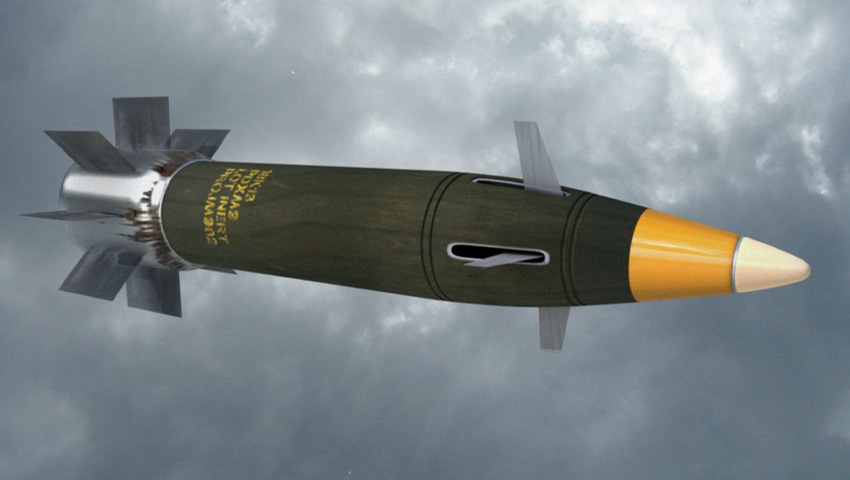Raytheon’s new Excalibur S precision-guided munition scored direct hits on moving targets in a US Navy test. Testing validated the projectile’s ability to survive the shock and stress of a howitzer firing, then transition from GPS to laser guidance and hit a moving target.
Excalibur S uses the Excalibur Ib variant's GPS technology and incorporates a semi-active laser seeker to engage mobile land and maritime targets at comparable ranges. Existing Ib projectiles can be upgraded with Excalibur S capabilities.
Sam Deneke, Raytheon land warfare systems vice president, said, "Using artillery to engage moving targets gives soldiers more flexibility. Artillery is typically used to hit stationary objects, but Excalibur S expands the capability of artillery on the battlefield."
The Excalibur projectile is a true precision weapon, impacting at a radial miss distance of less than two metres from the target. Unlike 'near precision' guidance systems, the Excalibur weapon provides accurate first-round effects at all ranges in all weather conditions.
This weapon system also extends the reach of .39-calibre artillery to 40 kilometres and .52-calibre artillery to more than 50 kilometres.
The Excalibur munition is compatible with every howitzer with which it’s been tested. This weapon is fully qualified in multiple systems, including the M777, M109 series, M198, the Archer and PzH2000.
It’s also compatible with the AS90, K9 and G6 howitzers. Plans are underway to integrate it with other mobile artillery systems.
The Excalibur projectile’s precision, coupled with its ability to be integrated on multiple gun systems, enables both the US and its coalition partners to provide overmatch capabilities against land targets in a variety of combat environments. This includes stationary land targets.
Sweden, Canada, Australia and the Netherlands have chosen the Excalibur precision-guided projectile to address vital security interests, and several other international partners are finalising procurement plans.
Raytheon has developed the Excalibur Shaped Trajectory, or EST, variant that will enable soldiers to eliminate targets in hard-to-reach locations by selecting the projectile's terminal or final phase attack angle. It was successfully tested in 2018 and is now being deployed to US forces.
With a history of innovation spanning 98 years, Raytheon provides state-of-the-art electronics, mission systems integration, C5I products and services, sensing, effects, and mission support for customers in more than 80 countries. Raytheon is headquartered in Waltham, Massachusetts.


